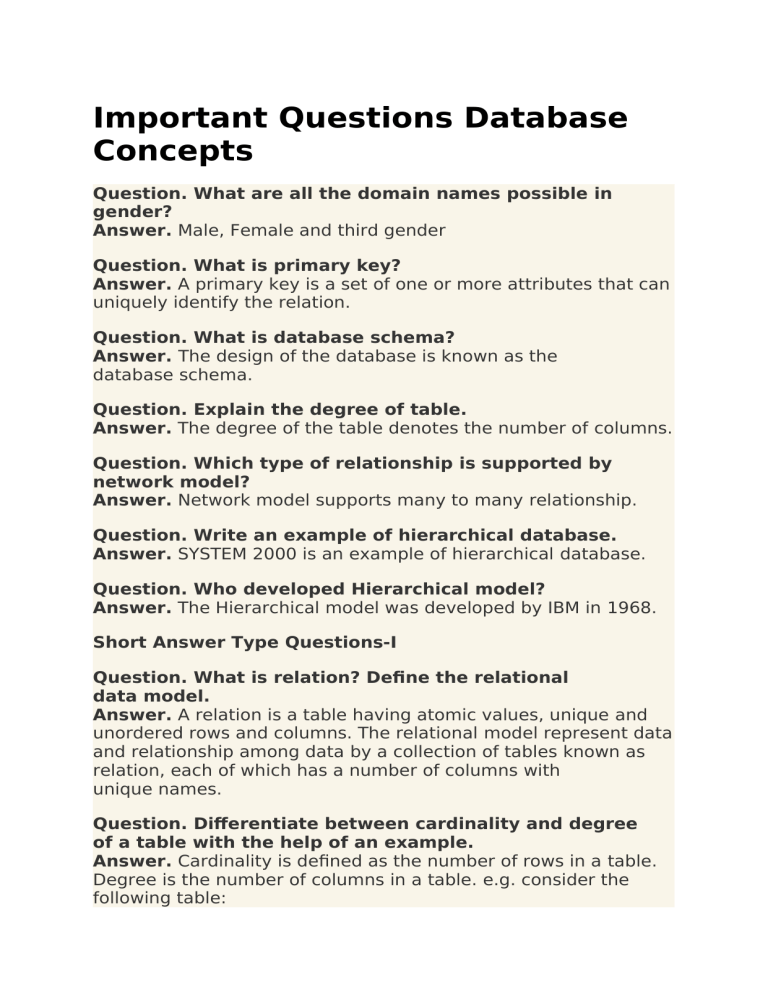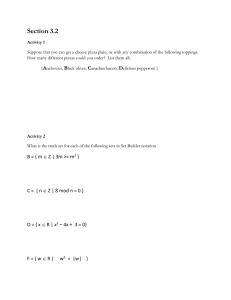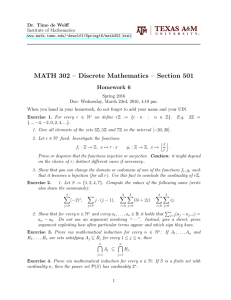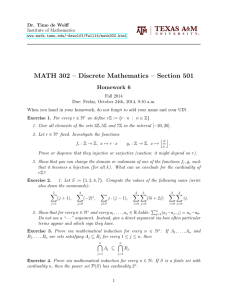
Important Questions Database Concepts Question. What are all the domain names possible in gender? Answer. Male, Female and third gender Question. What is primary key? Answer. A primary key is a set of one or more attributes that can uniquely identify the relation. Question. What is database schema? Answer. The design of the database is known as the database schema. Question. Explain the degree of table. Answer. The degree of the table denotes the number of columns. Question. Which type of relationship is supported by network model? Answer. Network model supports many to many relationship. Question. Write an example of hierarchical database. Answer. SYSTEM 2000 is an example of hierarchical database. Question. Who developed Hierarchical model? Answer. The Hierarchical model was developed by IBM in 1968. Short Answer Type Questions-I Question. What is relation? Define the relational data model. Answer. A relation is a table having atomic values, unique and unordered rows and columns. The relational model represent data and relationship among data by a collection of tables known as relation, each of which has a number of columns with unique names. Question. Differentiate between cardinality and degree of a table with the help of an example. Answer. Cardinality is defined as the number of rows in a table. Degree is the number of columns in a table. e.g. consider the following table: Question. What is table? Also, define Candidate Key. Answer. A table consists of a number of rows and columns. Each record contains values for the attributes. A candidate key is the smallest subset of the super key for which there does not exist a proper subset that is super key. In other words, all attribute combinations inside a relation that can serve as primary key are candidate keys. Question. Differentiate between the primary key and alternate key of a table with the help of an example. Answer. A primary key is a value that can be used to identify a unique row in a table. While an alternate key is any candidate key which is not selected to be the primary key. Example So, Bank A/C Num and Aadhar Num are the candidate keys for the table. Primary key: Aadhar Num Alternate key: Bank A/C Num Question. Observe the following table carefully and write the names of the most appropriate columns, which can be considered as (i) candidate keys and (ii) primary key Answer. Candidate keys : Id, Product Primary key : Id Question. Explain the concept of candidate keys with the help of an appropriate example. Answer. Candidate key is a column or set of columns that can help in identifying records uniquely. Example: consider a table STUDENT Here, Admn No and Roll No define the table uniquely. Hence, they are candidate keys. Question. Define degree and cardinality. Based upon given table write degree and cardinality. Answer. Degree is the number of attributes or columns present in a table. Cardinality is the number of tuples or rows present in a table. Degree: 4 Cardinality : 5 [2 marks for correct answer] Question. Observe the following table and answer the parts (i) and (ii): (i) In the above table, can we have Qty as primary key. [Answer as Yes/No.]. Justify your answer. (ii) What is the cardinality and degree of the above table? Answer. (i) No. Because there is a duplication of values and primary key value cannot be duplicate. (ii) Degree : 4 Cardinality : 5 Question. A table CUSTOMER has 10 columns but no row. Later, 10 new rows are inserted and 3 rows are deleted in the table. What is the degree and cardinality of the table CUSTOMER? Answer. Degree = 10 (No. of columns) Cardinality = 10 – 3 = 7 (no. of rows) Question. Write some advantages of DBMS over file system? Answer. (i) No redundant data (ii) Data security (iii) Easy access to data (iv) Data consistency and integrity Question. Observe the table CLUB given below: (i) What is the cardinality and degree of the given table? (ii) If a new column Contact No is added and three more members join the club then how these changes will affect the degree and cardinality of the table. Answer. (i) Cardinality : 4 Degree : 5 (ii) Cardinality : 7 Degree : 6 Long Answer Type Questions-I Question. What is Hierarchical model? Answer. The hierarchical model was developed by IBM in 1968. The data is organised in a tree structure where the nodes represent the records and the branches of the tree represent the fields. Since the data is organized in a tree structure, the parent node has the links to its child nodes. If we want to search a record, we have to traverse the tree from the root through all its parent nodes to reach the specific record. Thus, searching for a record is very time consuming. Question. Explain database. Answer. A database is a collection of interrelated data. A database consists of a number of tables. Each table comprises of rows(records) and columns (attributes). Each record contains values for the corresponding attributes. The values of the attributes for a record are interrelated. For example, different cars have different values for the same specifications (length, color, engine capacity etc.) Question. Explain network data model. Answer. In network data model, the data is represented by collection of records and relationship among data that are represented by links like hierarchical data model. The only difference is that in the network data model, records are organized as arbitrary graphs rather than trees. In this model, the parent child relationship is Many-to-Many i.e., one child segment can have multiple parent segments. Long Answer Type Questions-II Question. Define database management system. Answer. A database management system (DBMS) is a set of programs that enables the users to define, create and maintain the database and provides controlled access to this database. The primary goal of DBMS is to provide a way to store and retrieve database information that is both convenient and efficient. Data in a database can be added, deleted, changed, sorted, searched, etc. using a DBMS, e.g. MySQL Ingress, MSAccess, Oracle, etc. The purpose of a DBMS is to bridge the gap between the information and data. The data stored in memory or on a disk must be converted to usable information. Question. What are keys? Name all the keys used in DBMS. Answer. The key is defined as the column or attribute or a combination of attributes that is used to identify records of the database table. Sometimes we might have to retrieve data from more than one table, in that case we require to join tables with the help of keys. It also controls and maintains the integrity of information stored in the database. There are various types of keys, as (i) Primary key (ii) Candidate key (iii) Alternate key (iv) Foreign key Question. What is the need of database system? Answer. The need of database systems arose in the early 1960s, in response to the traditional file processing system. In the file processing system, the data is stored in the form of files and a number of application programs are written by programmers to add, modify, delete and retrieve data to and from appropriate files. New application programs are added to the system as the need arises. Now, suppose a need arises to keep additional information about the publishers of the books that include phone number and email id. To fulfill this need, the system creates a new file PUBLISHER, which includes name, address, phone number and e-mail id of publishers. This gives rise to data redudancy, inconsistency, unshareable data, insecured & incorrect data etc. A DBMS solves all these problems.




